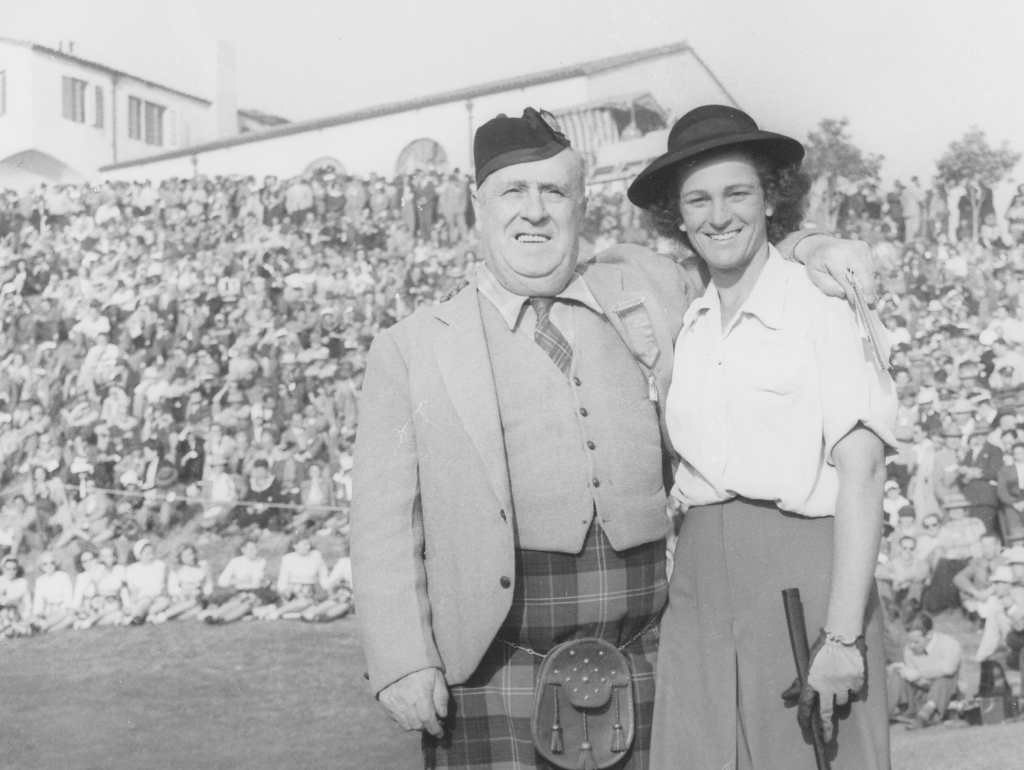She can play
Three starts in the Los Angeles Open. Two missed cuts. One two-day cut made; three-day cut missed. Those stats on paper are not historic. But given whose stats those are, they are as historic as they come.
Babe Didrikson Zaharias was one of the greatest athletes of the 20th century and arguably one of, if not the greatest female athlete of all time. Born in 1911, Mildred Ella Didrikson was given the nickname Babe after drawing comparisons to Babe Ruth and the way the two athletes dominated the sports world. For Didrikson, excelling in athletics came naturally, from baseball, to basketball, track and field and eventually golf. While she would go on to have an illustrious amateur and professional career in golf, Babe became a household name during the 1932 Olympic Games which were held in Los Angeles.
Unlike modern times where athletes specialized in one sport, during the 1932 games it was common for an athlete to compete in multiple disciples. Didrikson qualified for five events – javelin, 80-meter hurdles, high jump, 100-meter sprint and discus. At the time, the Olympics had a rule limiting female participation to only three sports so Babe was forced to forgo her participation in the 100-meter sprint and discus. She won gold in javelin. She won gold in hurdles. She won silver in high jump after tying with fellow American Jean Shiley but was denied a gold medal after it was determined Babe used an improper technique in the jump-off. To this day, Didrikson is the only track and field athlete, male or female, to win individual Olympic medals in throwing, running and jumping events.
Coming off one of the most successful individual Olympic performances ever, Didrikson remained in Los Angeles and turned her attention to golf, joining the Rancho Golf Club in the summer of 1933. For the next two years, Didrikson would enter and win many local women’s amateur competitions, but in 1935 the USGA ruled Didrikson to be a professional as she had previous success in other sports, some at a professional level. Losing her amateur status wouldn’t deter Didrikson.
In 1935, Didrikson received a Sponsors Exemption into the Cascades Open and in 1937 she received an exemption into the Chicago Open. In 1938, Didrikson would compete in a familiar setting at the LA Open, held that year at Griffith Park. Paired with George Zaharias, a professional wrestler, Didrikson consistently outdrove her male counterpart. Babe shot 81-84 to miss the cut. George also missed the cut but the two fell for each other and were married later that year.
With George as her manager, Babe would spend the better part of the next decade competing as a professional in golf tournaments. When she would arrive at the first tee, Babe’s outspoken personality was often on display. She would boldly proclaim “The Babe is here, who is going to finish second?” Her proclamations were often right. In 1942, the USGA re-accepted Babe’s status as an amateur setting up what was to be a game-changing few years.

In 1945, Babe became the first woman to qualify for a men’s professional PGA tournament. She shot 76-76 to earn a spot in the 1945 LA Open at The Riviera Country Club. Babe would make the two-day cut before ultimately missing the three-day cut. The following year, Babe received a Sponsors Exemption into the LA Open and teed it up again at Riviera. 1946 was the third and final time Babe would compete in the LA Open.
Following her start at Riviera, Babe won the 1946 Women’s US Amateur and a year later won the 1947 British Ladies Amateur, becoming the first American to do so. Her success on course continued with the 1948 Women’s US Open victory, the first of her three victories in that event.
While her personal career was at its height in the late 1940s and early 1950s, Babe ensured her legacy would live on well beyond her days. In 1950, Babe was one of 13 founding members of the Ladies Professional Golf Association (LPGA). From drafting by-laws to supervising membership and setting up tournaments, Babe helped establish the women’s professional game of golf. Her legacy was cemented in 1951 when Babe was inducted into the World Golf Hall of Fame.
In 1953 Babe was diagnosed with cancer. While the disease would ultimately take her life in 1956, Babe returned to competition following her diagnosis and treatment. She would win the 1954 Women’s US Open, her 10th and final major, by 12 strokes.
While her play on course spoke for itself, Babe Didrikson Zaharias changed the game. From competing in the men’s game to laying the foundation of the women’s professional game, her contributions to the sport of golf are immeasurable.
